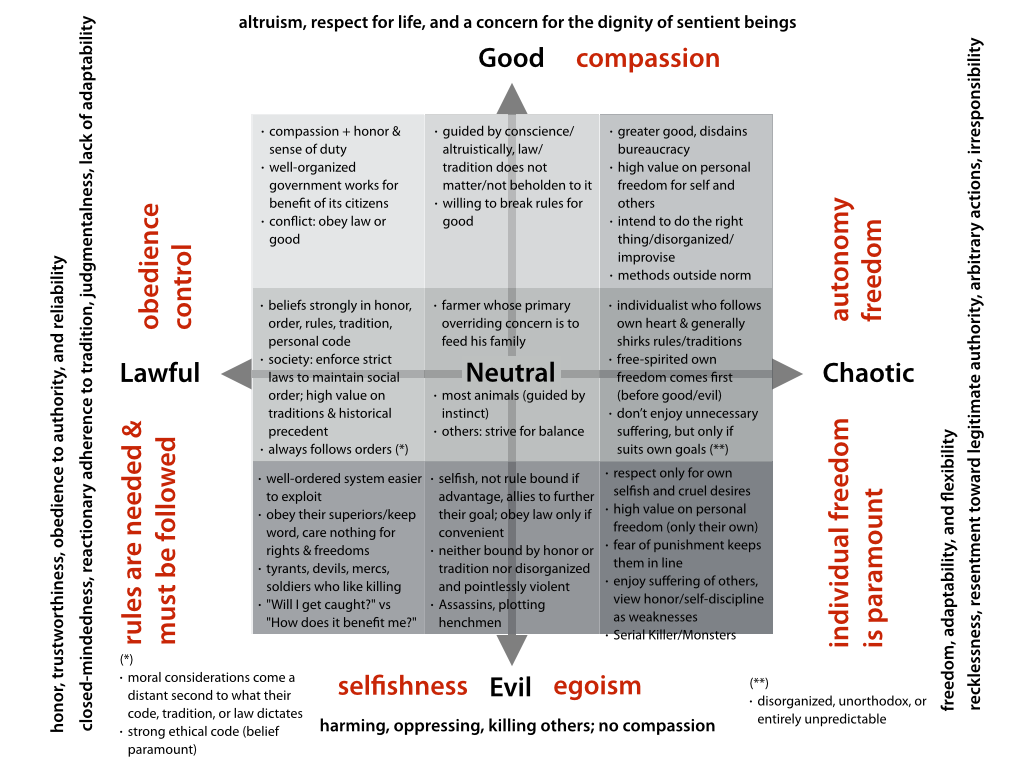«Laws change depending on who’s making them, but justice is justice.»
Odo in Star Trek DS9 «A Man Alone»
Recently I started to think about Role-Playing Game Systems. They are incredible inventions — the desire to create fictional worlds, yet make them controlled by laws we can follow. And one of those aspects is the alignment system usually used in systems like AD&D and the like (e.g., Neverwinter Nights, Pathfinder: Kingmaker, and various other systems). They operationalized human morality — and stuck with a system that worked.
These systems use two dimensions — lawful to chaotic, and good to evil — to determine the moral aspect of a character. It does have in-game consequences, including when it comes to spells and weapon effects, so it’s anything but trivial. In short (using the description in “Pathfinder: Kingmaker”):
A creature’s overall moral and personal attitudes are represented by its alignment: lawful good (LG), neutral good (NG), chaotic good (CG), lawful neutral (LN), neutral (N), chaotic neutral (CN), lawful evil (LE), neutral evil (NE), or chaotic evil (CE). Good characters protect innocent life. Evil characters debase or destroy it, whether for fun or profit. Lawful characters tell the truth, keep their word, respect authority, honor tradition, and judge those who fall short of their duties. Chaotic characters follow their consciences, resent being told what to do, favor new ideas over tradition, and keep their promises only if they feel like it.
Pathfinder: Kingmaker
And yeah, this results in nine categories of alignment:

What I find really interesting here is … people who understand this alignment system realize that the law isn’t inherently good. It’s just the law. And I wonder … is this something RPGs are really good at? Teaching people about morality?
If this is the case, RPGs might be more helpful — or more dangerous, depending on your affiliation — than previously expected.